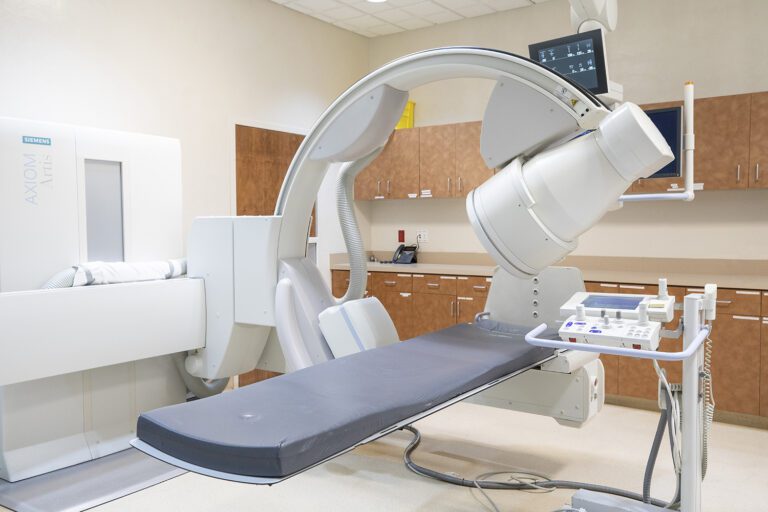You will be asked not to eat for 2 hours prior to the procedure. Please arrive for your procedure with a responsible adult who can drive you home.
The procedure is performed by a certified technologist specializing in vascular interventional radiology. Using ultrasound and fluoroscopic (X-ray) guidance, the technologist will locate the large veins in the upper arm, cleanse the arm, and cover the area with a sterile drape to prevent infection. The technologist will then place a tourniquet on the arm and apply a local anesthetic to numb the area where the PICC line will be inserted. Using ultrasound and fluoroscopic (X-ray) guidance, the PICC line will be inserted, guided into the vein near the heart, and secured in the proper location.
The technologist will then cover the insertion area with a clear sterile dressing and pressure bandage.
Most patients feel little or no discomfort during this procedure. After being monitored for a short time, you will be released with discharge instructions. The entire procedure usually takes about 45-60 minutes.
For your safety and the protection of others, we do not allow anyone other than patients in our exam rooms.
Significant complications related to PICC line insertion are very uncommon. The primary risks associated with this procedure include:
• Bleeding
• Infection
• Tissue damage at the insertion site
After the PICC line has been inserted, you should call your doctor or healthcare provider immediately if you experience any of the following symptoms:
• Worsening pain in the arm or at the insertion site
• Warmth, redness, or swelling of the arm or insertion site
• Excessive bright red bleeding at the insertion site
• Fever
• Tear or break in the PICC line
• Continuous alarm of the IV pump, even after flushing the catheter
• Leakage of IV fluid around the insertion site
A final report describing the procedure will be sent to your doctor or healthcare provider.
Reports are also available on the Patient Portal


